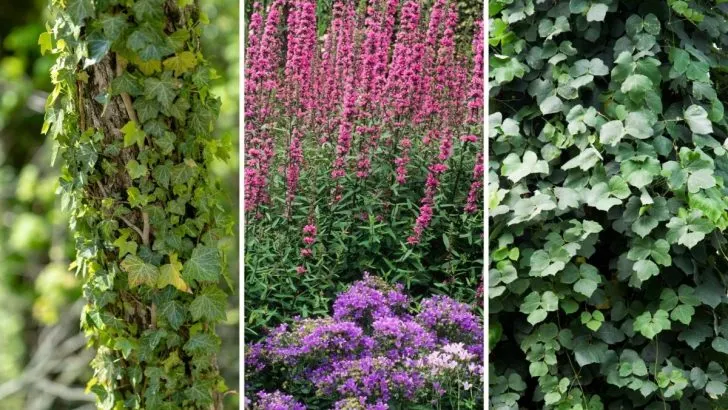Invasive plants might seem appealing at first glance. They come with attractive foliage, colorful blooms, and remarkable resilience. However, these attributes often mask a darker side.
Invasive species are non-native plants that spread aggressively, often at the expense of local ecosystems. They can monopolize resources, displacing native vegetation and disrupting wildlife habitats.
Understanding the impact of invasive plants is crucial, not just for the health of your yard, but for local biodiversity as well.
Removing or avoiding planting these species can preserve natural habitats and protect the delicate balance of your local environment. So, let’s explore some of the most common culprits that might be better left out of your garden.
1. English Ivy (Hedera helix)
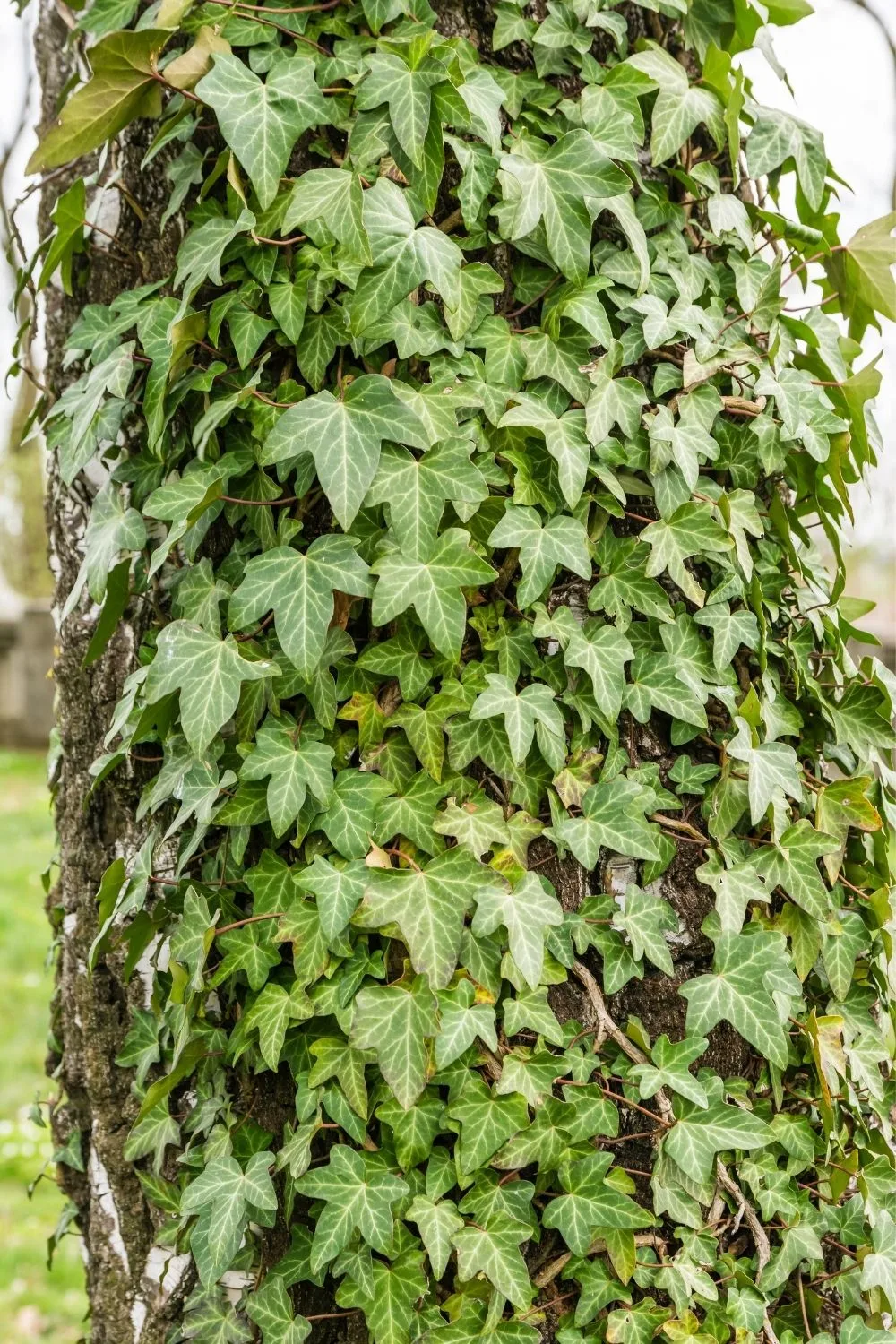
English Ivy is a popular choice for ground cover due to its ability to thrive in shaded areas. However, its aggressive nature can quickly become problematic.
English Ivy climbs and suffocates trees, weakening them and increasing susceptibility to diseases. Its dense coverage can also suppress the growth of native understorey plants.
While its lush green leaves are charming, the environmental costs are significant. Instead, consider alternatives like native ferns or wild ginger that offer similar aesthetic benefits without the ecological drawbacks.
2. Japanese Honeysuckle (Lonicera japonica)
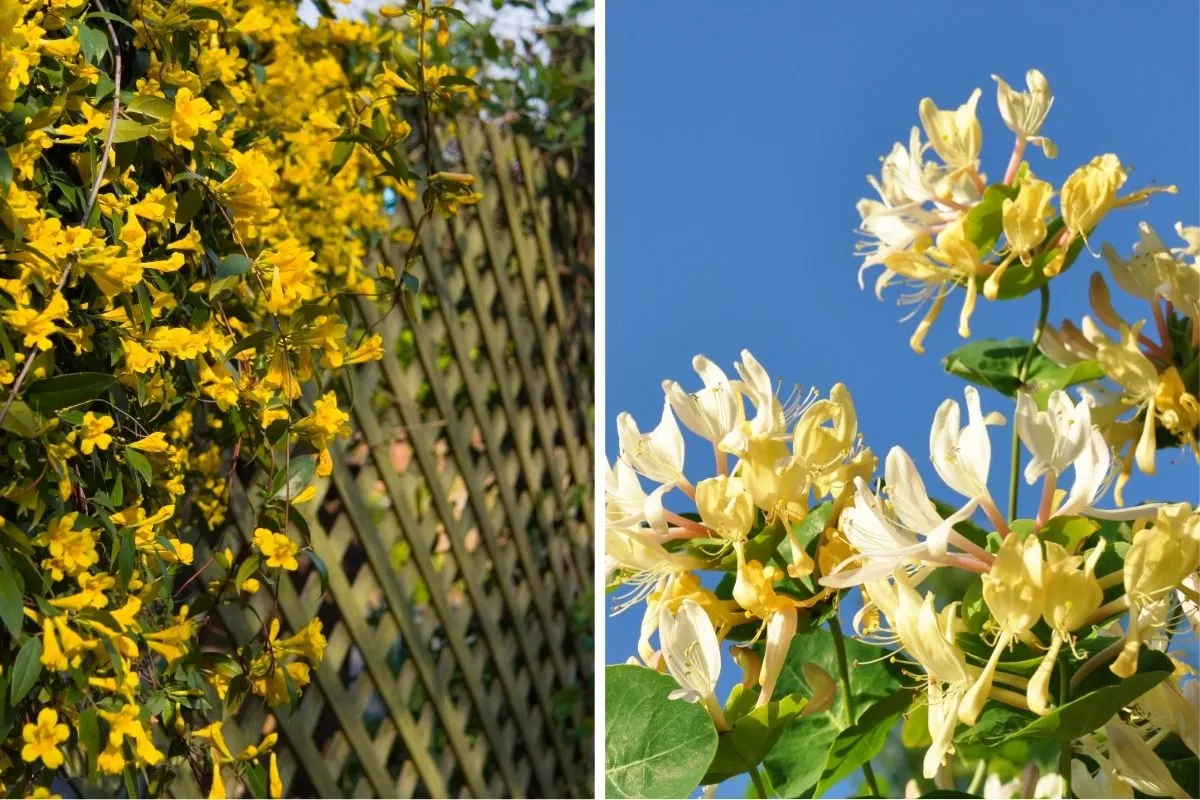
With its sweet-scented flowers, Japanese Honeysuckle is often regarded as a fragrant addition to gardens. Yet, this plant quickly overpowers native species, forming dense mats that inhibit their growth. Its rapid spread can choke out other essential native flora.
Opt for native honeysuckle varieties or fragrant shrubs as substitutes. These alternatives not only preserve the local ecosystem but also provide comparable blooms and scents to delight your senses.
3. Bamboo (Multiple Species)
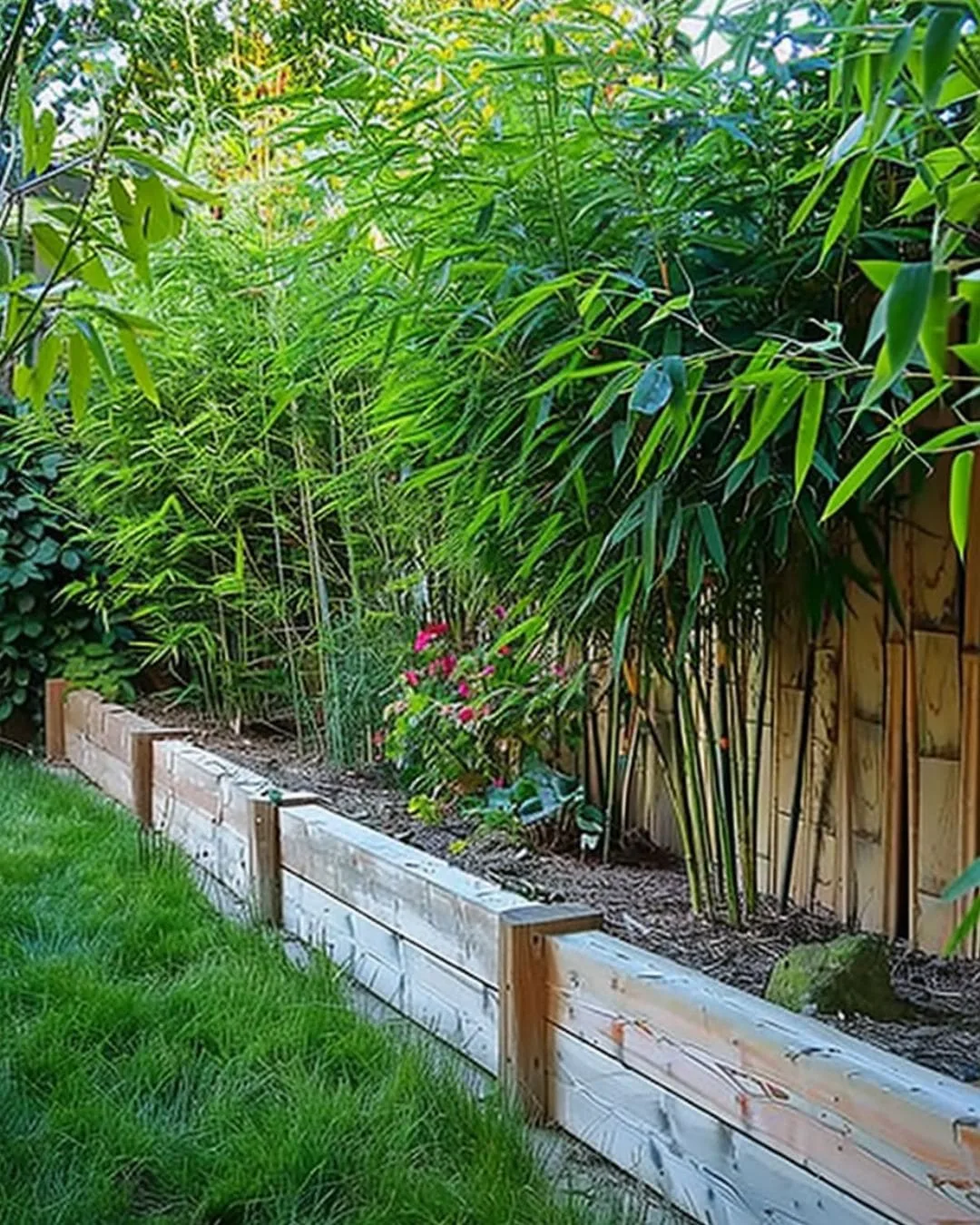
Bamboo is admired for its fast growth and striking appearance, making it a frequent choice for privacy screens. However, certain species, like Golden Bamboo, can become unmanageable. Bamboo spreads through underground rhizomes, extending far beyond intended boundaries.
Consider clumping bamboo varieties or alternatives such as native ornamental grasses, which offer natural beauty without the risks of invasion. They provide the same vertical interest and privacy without wreaking havoc on surrounding areas.
4. Kudzu (Pueraria montana var. lobata)

Known as “the vine that ate the South,” Kudzu spreads rapidly, engulfing landscapes and smothering everything in its path. This tenacious plant covers trees, power lines, and fields, creating a blanket that blocks sunlight necessary for other plants.
Kudzu’s rampant growth underscores the importance of preventing its cultivation. Use native vine species that can climb structures but don’t overpower the ecosystem, such as trumpet honeysuckle, which supports local wildlife.
5. Purple Loosestrife (Lythrum salicaria)
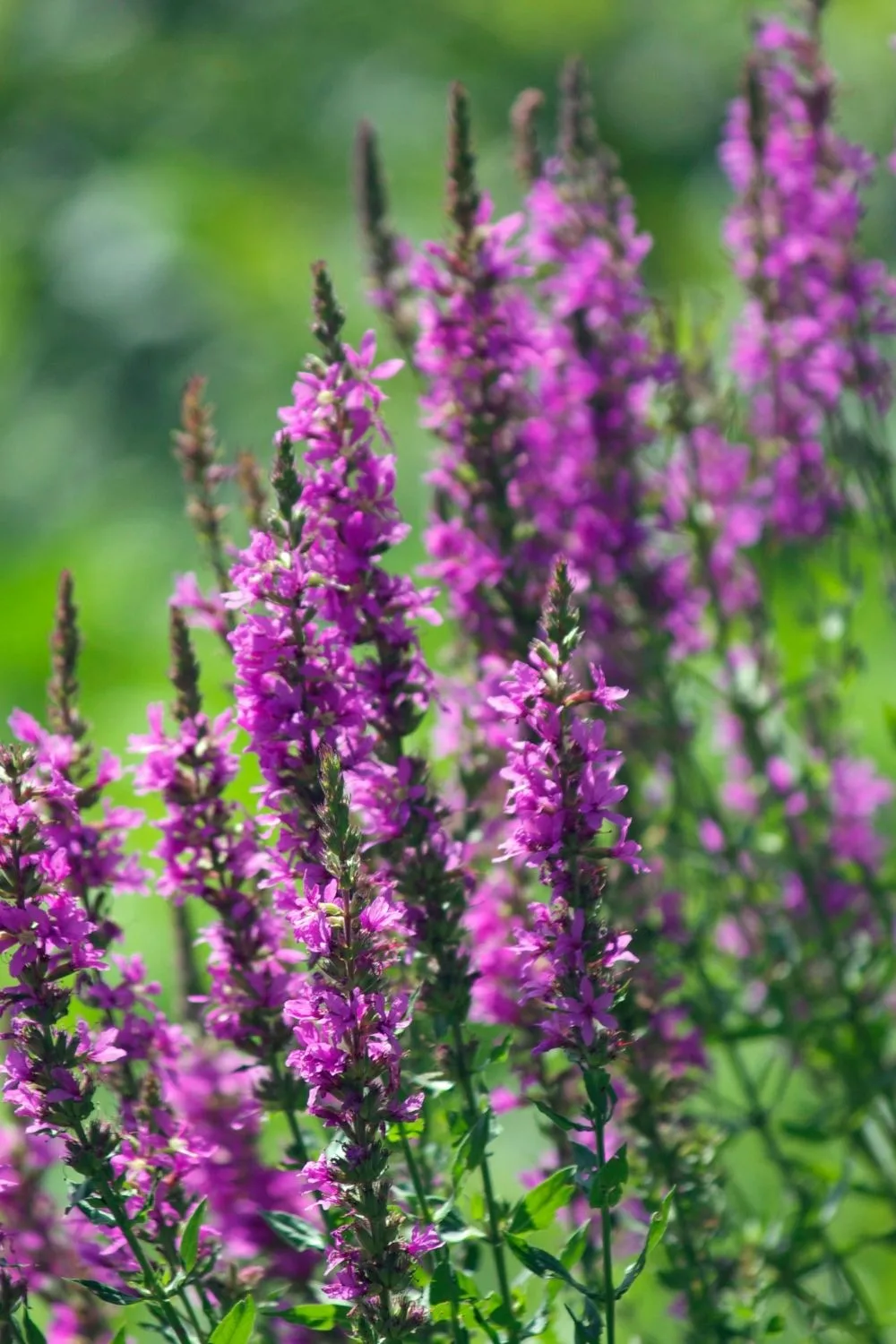
While the vibrant purple flowers of Purple Loosestrife are visually striking, they can aggressively dominate wetlands, affecting water flow and the availability of habitats for native flora and fauna. Its ability to produce numerous seeds allows it to spread rapidly, making it hard to control once established.
Substitute this plant with native counterparts like swamp milkweed or Joe-Pye weed, which promote biodiversity and sustain pollinators without the invasive tendencies.
Making Thoughtful Choices for Your Garden
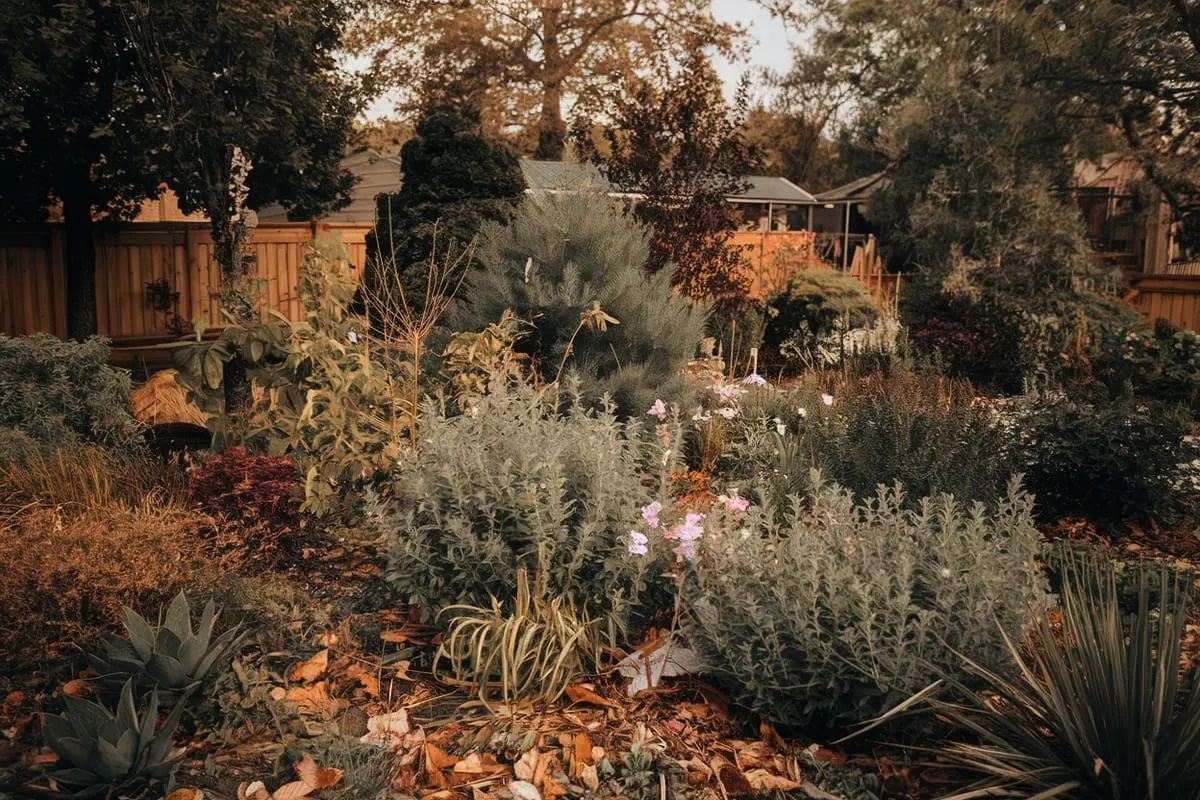
Creating a beautiful garden doesn’t have to come at the expense of local ecosystems. By avoiding these invasive plants and choosing native alternatives, you can design a space that thrives sustainably.
Your yard can become a haven for local wildlife, a contributor to regional biodiversity, and a personal retreat that aligns with environmental values.
Next time you’re planning your garden, consider both beauty and environmental impact. Together, small actions like selecting the right plants can lead to significant positive changes for our environment.
Plus, your garden will remain beautifully manageable, teeming with life that supports the broader ecosystem.

